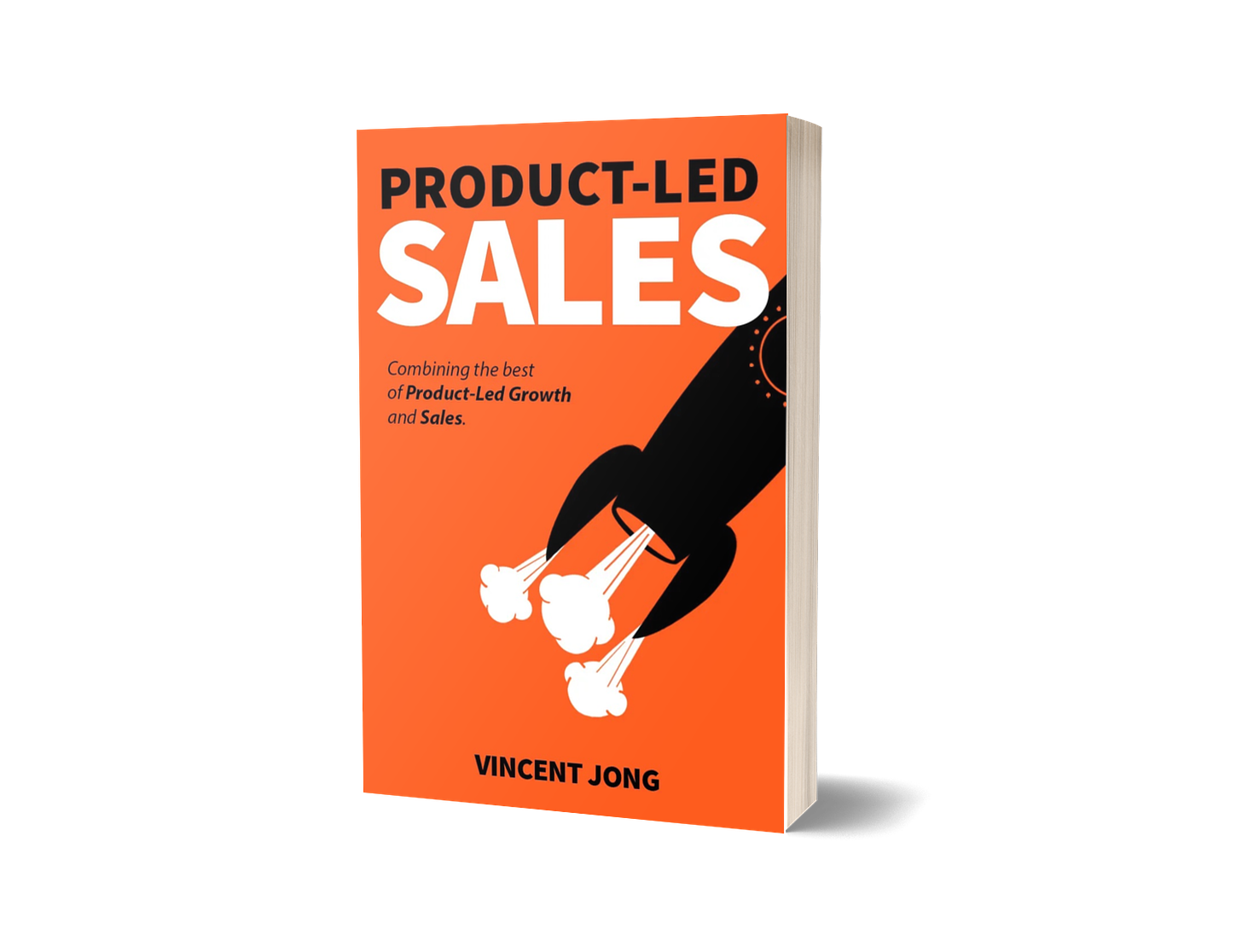Out now: My book on Product-Led Sales
Now available on Amazon
🇺🇸 US, 🇬🇧 UK, 🇳🇱 NL, 🇪🇸 ES, 🇩🇪 DE, 🇫🇷 FR, 🇮🇹 IT, 🇵🇱 PL, 🇸🇪 SE, 🇯🇵 JP, 🇨🇦 CA, 🇦🇺 AU
You’ve heard about Product-Led Growth (PLG). You know the success stories of companies like Slack and Zoom and how they have used PLG to grow explosively. But if you’ve grown your business through traditional sales, you might be wondering if PLG can do anything for you.
You might be wondering:
What are the fundamentals of Product-Led Growth?
Can I combine PLG with my sales team?
Does it mean I have to lower my prices?
Is it going to cannibalize my existing revenue?
Does it mean I have to transform my entire company?
Here’s the missing piece of information: you don’t have to choose between PLG and sales. It’s not one or the other. There’s a middle ground.
That’s the big idea of this book: you can combine the power of PLG with the value of a human touch in sales. The combined strategy is Product-Led Sales (PLS).
The earliest definition of Product-Led Sales was something like this:
using a product-led approach to onboard customers, for example via a free trial, combined with a sales team reaching out to those customers who demonstrated the qualifying behavior.
But in this book, PLS means:
ANY combination of a product-led approach and a sales team.
The reason is that product-led-onboarding isn’t the only way to combine PLG with sales. Another option, for example, is to have an outbound sales team that calls customers and invites them to sign up for a free trial. We’ll discuss the different options in the subsequent chapters.
My obsession with PLS started with a firsthand learning experience. My current company, Dealfront, was the result of a merger between two businesses. I was brought in as a product leader. My mission was to make sure the solutions we offered could work and grow together.
I soon realized we were in a unique situation.
One company (Echobot) had been growing through a traditional sales approach. The other (Leadfeeder) had been built with Product-Led Growth. Both companies had built these models out at scale. Both companies were similar size (in employee count and revenue) at the time of the merge. But in other ways, they couldn’t have been more different.
1
Echobot’s model was focused on maximizing the initial contract value with the customer. Even if this resulted in a longer sales cycle. This is common in a traditional sales strategy. Leadfeeder operated a high-velocity model. The goal was to close an initial contract as fast as possible and grow the contract later.
2
For Leadfeeder, product metrics were a key part of the go-to-market strategy. They were always talking about “product-qualified leads”—people who had used the product enough for the sales team to get in touch. For Echobot, the product could only be accessed after signing a contract. Thus, this was not of interest during the sales cycle.
3
This also translated into the organizational structure. Leadfeeder had more product related functions in place, like Growth, Product Marketing, and Product Analytics. Echobot didn’t have these departments. However, they did have people focused on Sales Enablement, that Leadfeeder didn’t have.
But we wanted to get the best of both worlds. As we cross-pollinated the different growth systems, we started to learn how they could both benefit from each other’s approaches. That meant combining a PLG model with a traditional sales model, with both models fully deployed at the time, with two sets of teams, and with both companies doing double-digit millions in revenue.
It sounded like an exciting challenge when I joined. And it didn’t disappoint.
This book explains everything I learned from this experience, as well my 8 years as founder and CEO of a PLG-driven business called FunnelFox. My point of view is different, because I’ve seen this problem from every angle.
As a founder, my primary focus is on how to build a successful business. As a product leader, my secondary focus is on the different ways the product can drive growth. I’ve also spent 6 years in my early career as a sales rep, and managed a sales team during my time at FunnelFox. So I also know what it’s like to be at the forefront.
One person can’t know it all though. So this book also includes interviews with leading operators and thought leaders. They will share their experiences with Product-Led Sales at companies like Amplitude, Snyk, and Leadfeeder.
This book will help you combine PLG and Sales in the way that’s right for your business. You’ll know when the PLG approach makes sense, and when it’s best to use Sales. You’ll be able to find the best of both worlds and unlock growth that wouldn’t be possible with just one. All without losing the momentum and customers you have today.
Order the book today on Amazon
🇺🇸 US, 🇬🇧 UK, 🇳🇱 NL, 🇪🇸 ES, 🇩🇪 DE, 🇫🇷 FR, 🇮🇹 IT, 🇵🇱 PL, 🇸🇪 SE, 🇯🇵 JP, 🇨🇦 CA, 🇦🇺 AU




